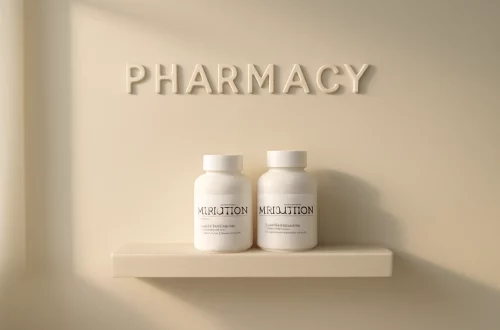
The Benefits of Hydrolyzed Protein Powder for Muscle Recovery and Growth
Hydrolyzed protein powder has gained significant popularity in the fitness and health community, particularly among athletes and individuals looking to enhance their muscle recovery and growth. This specialized form of protein is produced through the hydrolysis process, where proteins are broken down into smaller peptides, making them easier for the body to absorb and utilize. As fitness enthusiasts increasingly seek effective supplements to support their training regimes, hydrolyzed protein powder presents a compelling option due to its rapid absorption rate and its potential to promote muscle repair and synthesis.
In a world where performance and recovery are paramount, understanding the benefits of hydrolyzed protein can be a game-changer. It not only serves as a convenient source of high-quality protein but also offers advantages that can enhance overall results. With a focus on optimizing muscle recovery and growth, hydrolyzed protein powder stands out as a remarkable supplement that can cater to various fitness goals, whether it’s building muscle mass, improving endurance, or speeding up recovery after intense workouts.
The appeal of hydrolyzed protein powder extends beyond its nutritional profile; it also aligns with the increasing demand for quick and efficient recovery solutions. As athletes push their bodies to the limit, the need for a reliable source of protein that can quickly replenish depleted amino acids becomes essential. Hydrolyzed protein powder not only meets this need but also contributes to overall health and wellness, making it an attractive addition to any fitness regimen.
Understanding Hydrolyzed Protein
Hydrolyzed protein is created through a process known as hydrolysis, where larger protein molecules are broken down into smaller fragments called peptides. This process enhances the bioavailability of the protein, allowing the body to digest and absorb it more efficiently. Unlike conventional protein powders, which may take longer to break down in the digestive system, hydrolyzed protein provides a faster way to deliver essential amino acids to muscle tissues.
The significance of this rapid absorption cannot be overstated, especially for athletes and fitness enthusiasts who engage in intense workouts. After strenuous exercise, the body requires immediate access to amino acids to initiate the muscle repair process. Hydrolyzed protein powder fulfills this requirement by delivering a concentrated source of amino acids directly into the bloodstream.
In addition to its absorption benefits, hydrolyzed protein is often lower in allergens and can be easier on the digestive system. Many individuals who experience sensitivities to regular protein sources, such as whey or casein, may find hydrolyzed options more tolerable. This makes it a versatile choice for a wider range of consumers, including those with dietary restrictions or lactose intolerance.
Moreover, hydrolyzed protein can contribute to improved muscle recovery times. When combined with proper nutrition and rest, the use of hydrolyzed protein powder can enhance the body’s ability to repair muscle damage and reduce soreness following intense workouts. This accelerated recovery can lead to increased training frequency and better overall performance.
Supporting Muscle Growth with Hydrolyzed Protein
One of the primary benefits of hydrolyzed protein powder is its role in promoting muscle growth. Muscle growth, or hypertrophy, occurs when the body repairs and rebuilds muscle fibers that have been stressed during exercise. The key to this process lies in the availability of amino acids, which serve as the building blocks for muscle tissue.
Hydrolyzed protein provides a rich source of these amino acids, particularly branched-chain amino acids (BCAAs) like leucine, isoleucine, and valine. Leucine, in particular, plays a crucial role in stimulating muscle protein synthesis. Studies have shown that the rapid delivery of these amino acids from hydrolyzed protein can significantly enhance the muscle-building process, especially when consumed immediately after workouts.
Incorporating hydrolyzed protein powder into a post-workout routine can be particularly effective for individuals looking to maximize their gains. Timing is critical; consuming protein shortly after exercise helps to create an anabolic environment in the body, where muscle repair and growth can occur more effectively. This makes hydrolyzed protein an excellent option for athletes who are serious about their training and want to optimize their results.
Additionally, hydrolyzed protein’s ability to support muscle growth is not limited to just post-workout consumption. It can also be integrated into daily nutrition to ensure a consistent intake of high-quality protein throughout the day. Whether added to smoothies, oatmeal, or used in baking, hydrolyzed protein powder can help individuals meet their daily protein requirements while supporting their overall muscle growth goals.
Finally, it’s important to note that while hydrolyzed protein powder can significantly enhance muscle growth, it should be part of a well-rounded nutrition plan. Sufficient caloric intake, hydration, and a balanced diet rich in vitamins and minerals are essential components of any effective muscle-building strategy.
Enhancing Recovery and Reducing Muscle Soreness
Recovery is an essential aspect of any fitness regimen, and hydrolyzed protein powder can play a vital role in this process. After intense workouts, muscles undergo micro-tears that need to be repaired. The efficiency of this repair process can determine how quickly an athlete can return to training and perform at their best.
One of the standout features of hydrolyzed protein powder is its ability to reduce muscle soreness, commonly referred to as delayed onset muscle soreness (DOMS). The faster absorption rate of hydrolyzed protein allows for quicker delivery of amino acids to muscles, which can help alleviate soreness and expedite recovery times. This is particularly beneficial for athletes involved in high-intensity training or those who engage in heavy lifting sessions.
Furthermore, the bioactive peptides found in hydrolyzed protein may possess anti-inflammatory properties, further supporting the recovery process. Inflammation is a natural response to exercise-induced muscle damage, but excessive inflammation can lead to prolonged soreness and hinder performance. By incorporating hydrolyzed protein into their post-workout nutrition, athletes can help mitigate this inflammation and promote faster recovery.
Additionally, the use of hydrolyzed protein powder can enhance overall performance by allowing for more frequent training sessions. When muscle recovery is optimized, athletes can train harder and more often, leading to greater improvements in strength, endurance, and overall fitness levels. This creates a positive feedback loop, where better recovery leads to increased training capacity, which in turn supports further progress.
In summary, hydrolyzed protein powder is not just a supplement for muscle growth; it is also a powerful ally in the recovery process. By reducing muscle soreness and facilitating quicker recovery times, hydrolyzed protein allows athletes to maintain a consistent training schedule and achieve their fitness goals more effectively.
Choosing the Right Hydrolyzed Protein Powder
When selecting a hydrolyzed protein powder, it’s important to consider several factors to ensure you choose a product that meets your needs. The first consideration should be the source of the protein. Common sources include whey, casein, and plant-based proteins. Each source has its unique benefits, so it’s essential to choose one that aligns with your dietary preferences and nutritional goals.
Whey protein hydrolysate is particularly popular among athletes due to its high biological value and rapid absorption. It is derived from milk and contains all essential amino acids, making it a complete protein. For those who are lactose intolerant or prefer plant-based options, hydrolyzed soy or pea protein can be excellent alternatives, offering a good amino acid profile without the dairy.
Another critical factor to consider is the ingredient list. Look for products that are free from artificial additives, fillers, and excessive sugars. A high-quality hydrolyzed protein powder should contain minimal ingredients, primarily focusing on the protein itself. Additionally, consider the flavor and mixability of the product, as these can affect your overall experience and adherence to your supplementation routine.
Lastly, pay attention to the brand’s reputation and transparency regarding their sourcing and manufacturing practices. Choosing a reputable brand that provides third-party testing can ensure that you are consuming a safe and effective product. Reading customer reviews and seeking recommendations from trusted sources can also help guide your decision.
In conclusion, while hydrolyzed protein powder offers numerous benefits for muscle recovery and growth, choosing the right product is essential for maximizing its effects. By considering the protein source, ingredient quality, and brand reputation, you can make an informed choice that supports your fitness journey.
**Disclaimer**: This article is not intended as medical advice. Always consult with a healthcare professional before making any changes to your diet or supplement regimen, especially if you have underlying health conditions or concerns.




